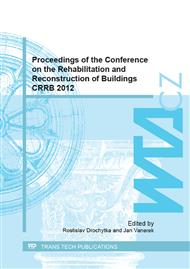p.3
p.10
p.20
p.27
p.37
p.45
p.54
p.60
p.73
The Evaluation of Modifications to Glued Joints Utilizing Epoxy-Based Adhesive for Structural Timber Bonding
Abstract:
The behavior of two types of modifications to glued joints utilizing epoxy resin-based adhesive was examined in a manner specified by the EN 302 standard using adherent beech wood specimens. The investigation was focused on the improvement of glued joint strength and adhesive properties. The first type of modification involved reinforcement of the epoxy-based adhesive with scattered polypropylene fibers with the aim of enhancing the tensile shear strength of the assembly. The other type of glued joint modification was the electrical discharge plasma treatment of the adherend surface. This technique for treating the surfaces of materials enables the greater spreading of liquids due to the increase in surface wettability it provides. Relevant characteristics of the test specimen – tensile shear strength and wood failure - were tested in order to analyze the behavior of the thus-modified epoxy-based adhesive-glued joints.
Info:
Periodical:
Pages:
37-42
Citation:
Online since:
May 2013
Authors:
Price:
Сopyright:
© 2013 Trans Tech Publications Ltd. All Rights Reserved
Share:
Citation:


